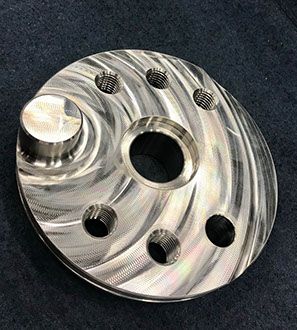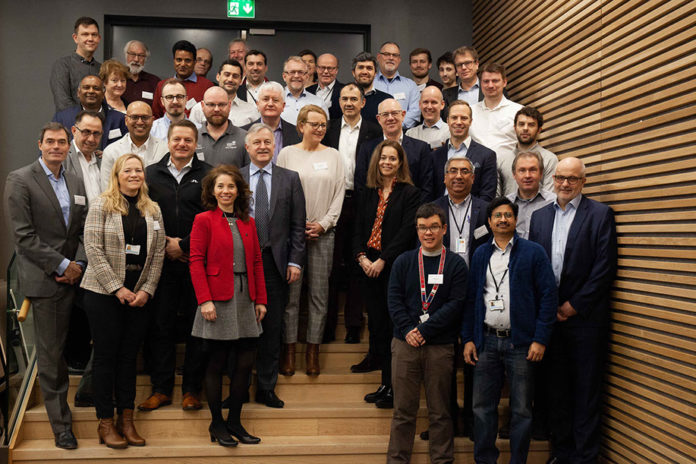Two years ago, an Oil & Gas Consortium launched two Joint Innovation Projects (JIPs) which aimed at defining a guideline and a business model for the use of additive manufacturing in the Oil, Gas and Maritime industries.
As a reminder, the partners represent the whole value chain and include:
- Operators: BP, Equinor, Shell & Total.
- Contractors : SLM Solutions, TechnipFMC, IMI CCI, Kongsberg & Siemens.
- Fabricators: Additive Industries, AFRC of the University of Strathclyde, Aidro Hydraulics & 3D Printing, Immensa Lab, Ivaldi Group, OCAS / Guaranteed (spin-off from Arcelor Mittal), Quintus Technologies, Sandvik, Vallourec & Voestalpine.
Managed by DNV GL and Berenschot, the JIPs laid emphasis on the development of guidelines for the qualification of parts produced by Laser Powder Bed Fusion (LPBF) and Wire Arc Additive Manufacturing (WAAM).
Berenschot was in charge of a toolbox for part selection, supply chain set-up and economic viability.
On the other hand, DNV GL managed the development of guidelines for certified parts produced using these technologies. Together with the partners, they established a framework to follow to ensure that metal spare parts and components meet specifications and quality requirements of the Oil & Gas and Maritime industries. These new guidelines also mean that parts should be produced in a repeatable and safe manner.
Examples of parts produced as part of the JIPs
The production of parts firs required to monitor all activities that could be carried out in this field and that would have required a complete guideline.
Furthermore, it also helps to ensure the development of high-quality guidelines that reflect the reality of manufacturing. In this vein, a Crank Disk is an example of application that was achieved as part of this project. It was produced with LPBF by Aidro for Kongsberg.

Aidro is an Italian company that specializes in the production of 3D Metal Printed products in the hydraulics sector. KONGSBERG on the other side, is a knowledge-based group that supplies high-technology systems and solutions to customers engaged in the oil and gas industry.
It usually takes 8 to 10 weeks to produce this part with conventional manufacturing processes. Using AM, Aidro required less than a week. The part was produced in Inconel 718, using EOS M290 printer. An example that shows the benefits of AM in terms of time and production.
“Using real world parts is essential in a project like this. Both the guideline and the business impact model need to be tested under conditions that resemble real life situations. By using real world parts, it is possible to assess the variations between traditional manufacturing processes and the Additive Manufacturing process. These variations are found along the entire value chain, not only in the discrete production phase”, explained Aidro.
Part categories & assurance in different stages
From now on, parts that will be produced in this sector might fall into three categories that depend on the consequences of failure: AM Class 1 (AMC 1) for non-critical components, AM Class 2 (AMC 2) is intended for less critical components and AM Class 3 (AMC 3) is intended for critical components.
Furthermore, based on the AM technology used, build process qualification testing, production testing and part qualification testing will follow specific manufacturing stages.
As explained on Aidro’s website:
“• All parts shall be manufactured using a qualified build process. A build process is qualified through a defined Build Process Qualification Testing (BPQT) procedure.
The purpose of the BPQT is to prove and provide a baseline that, when using a certain set of essential parameters, a certain quality is achieved
• Production testing is intended as a control to ensure that the manufacturing process produces parts according to the qualified build process not just once, but also on, for example, the second, tenth or twentieth build. The extent of production testing and type of tests carried out are different for the different AM technologies
• Depending on the criticality of the part to be manufactured, the part itself or a representative geometry may need to be tested. This is due to the unique possibility AM brings to produce the material and geometry simultaneously. The methodology and extent of part qualification testing depends on both AM Class and AM technology.”
What’s next?
Following the success of these JIPs, DNVL launched two new JIPs to further investigate on the use of AM technologies. This time, the overall goal would be to develop a Digital Warehouse program.
Remember, you can post free of charge job opportunities in the AM Industry on 3D ADEPT Media or look for a job via our job board. Make sure to follow us on our social networks and subscribe to our weekly newsletter : Facebook, Twitter, LinkedIn & Instagram ! If you want to be featured in the next issue of our digital magazine or if you hear a story that needs to be heard, make sure to send it to contact@3dadept.com.






